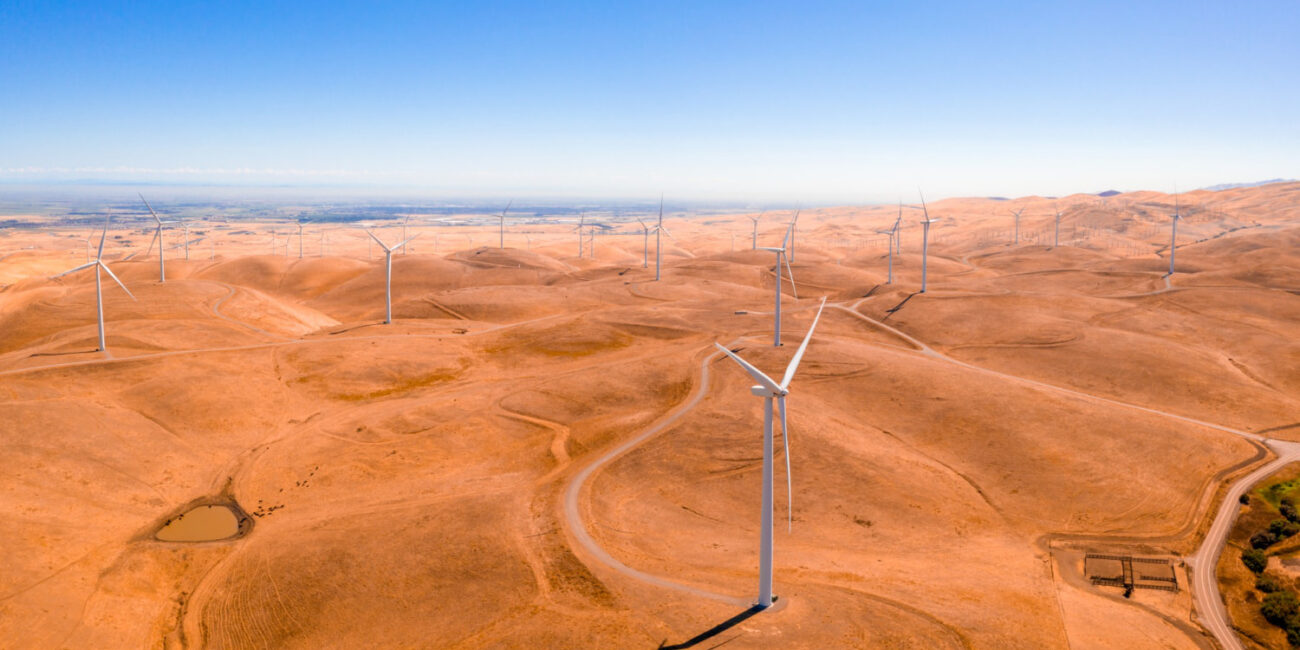Change Article Text Size:
Saudi Arabia is witnessing a major shift in the renewable energy sector, leading one of the world’s largest strategic transitions toward clean energy. With investments exceeding a quarter of a trillion dollars and landmark projects such as the Sakaka Solar Power Plant and the Dumat Al-Jandal Wind Farm, the Kingdom is redefining the global energy map and unlocking wide-ranging investment opportunities in this promising sector.
The Renewable Energy Revolution in Vision 2030
Renewable energy plays a central role in Saudi Arabia’s Vision 2030, which aims to radically transform the local energy mix. Since 2022, the Kingdom has connected 2,100 megawatts of renewable energy capacity to the national grid, bringing the total installed capacity to 2.8 gigawatts—marking real progress toward strategic goals.
A major milestone: The Kingdom has announced a 300% increase in the share of renewables in its energy mix, affirming its commitment to sustainable development and a green economy.
Massive Investment in Renewable Energy
With over $250 billion in planned investments, Saudi Arabia is gearing up to produce a diverse mix of renewable energy sources—including solar, wind, hydrogen, ammonia, and nuclear—positioning itself as a global leader in the clean energy transition. These investments open up broad opportunities for private sector and international investors alike.
Pioneering Projects Leading the Shift
Sakaka Solar Power Plant
The 300 MW Sakaka project is Saudi Arabia’s first utility-scale renewable energy plant. Operational since June 2020, this facility in Al-Jouf marks a true starting point for the Kingdom’s renewable energy sector. Spanning 6 square kilometers, the solar photovoltaic farm serves as a benchmark for large-scale renewable energy development.
Dumat Al-Jandal Wind Farm
Located in northern Saudi Arabia, 900 km from Riyadh, Dumat Al-Jandal is the Kingdom’s first wind energy project. With a planned capacity of 400 MW, it is designed to power 70,000 homes with clean electricity.
The National Renewable Energy Program
The Kingdom’s National Renewable Energy Program targets 9.5 GW of renewable capacity by 2023, with an interim goal of 3.45 GW by 2020. These ambitious targets reflect the country’s serious commitment to the clean energy transition.
Looking Ahead to 2024 and Beyond
Saudi Energy Minister Prince Abdulaziz bin Salman has announced plans to launch 20 GW worth of renewable energy projects in 2024—demonstrating continued momentum and expanding investment opportunities.
🚀 Investment Opportunities in the Sector
The Kingdom’s renewable energy sector offers a wide range of investment prospects, including development, operations, maintenance, and supporting technologies. With strong government backing and an enabling regulatory environment, investors can capitalize on the sector’s rapid growth.
Technology and Innovation
Saudi Arabia leverages its ideal geographic and climatic conditions—intense solar radiation and strong northern winds—to build highly efficient solar and wind energy projects.
NEOM and Future Cities
The NEOM project emphasizes innovation and sustainability, making renewable energy a core pillar of future city development. NEOM serves as a cutting-edge model for fully renewable-powered urban living.
Economic and Environmental Impact
Renewable energy projects support multiple strategic goals—diversifying national income, creating new jobs, and reducing carbon emissions. These projects currently supply energy to 185,000 households and contribute to lowering emissions, delivering both economic and environmental benefits.
Job Creation and Local Development
The sector generates thousands of direct and indirect jobs, from construction to operation and maintenance. It also stimulates the growth of local industries and logistics services in project regions.
Challenges and Solutions
Despite progress, the Kingdom faces challenges in areas like skilled workforce development, financing, and advanced technologies. The government is tackling these through training programs, international partnerships, and improvements to the regulatory environment.
Innovative Solutions
Efforts include expanding local financing programs, attracting foreign investments, and fostering public-private partnerships to ensure long-term sector sustainability.
Conclusion: A Bright Future for Renewable Energy
Saudi Arabia is now at the forefront of global renewable energy development, driven by a clear vision, substantial investment, and pioneering projects. With sustained momentum and strong government support, the sector represents a golden opportunity for investors looking to be part of a historic transformation.
Investing in Saudi renewable energy is not just a financial opportunity—it’s a contribution to a more sustainable future for generations to come. With rapid progress and ambitious plans underway, this vital sector is poised to reshape the energy landscape of the Kingdom and the region.



